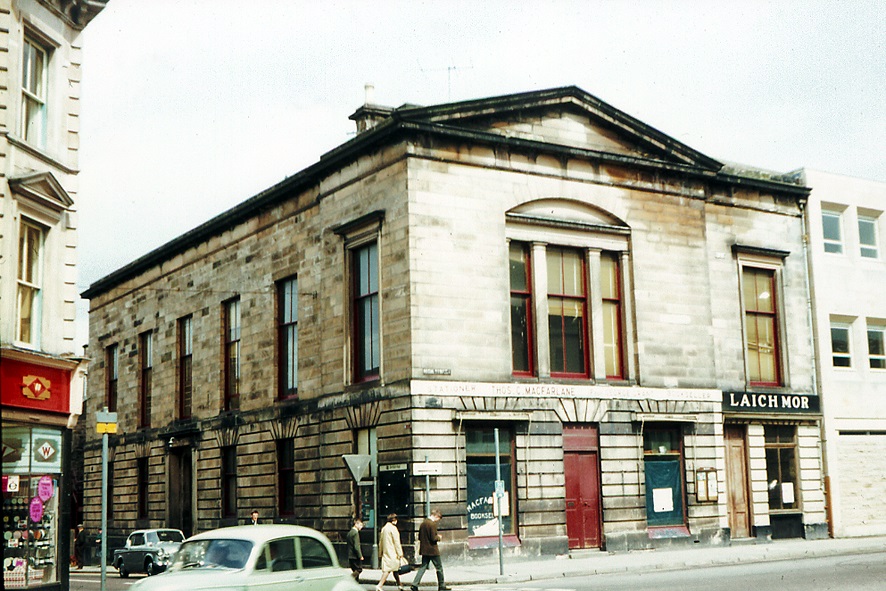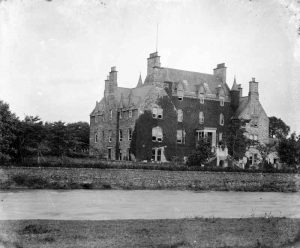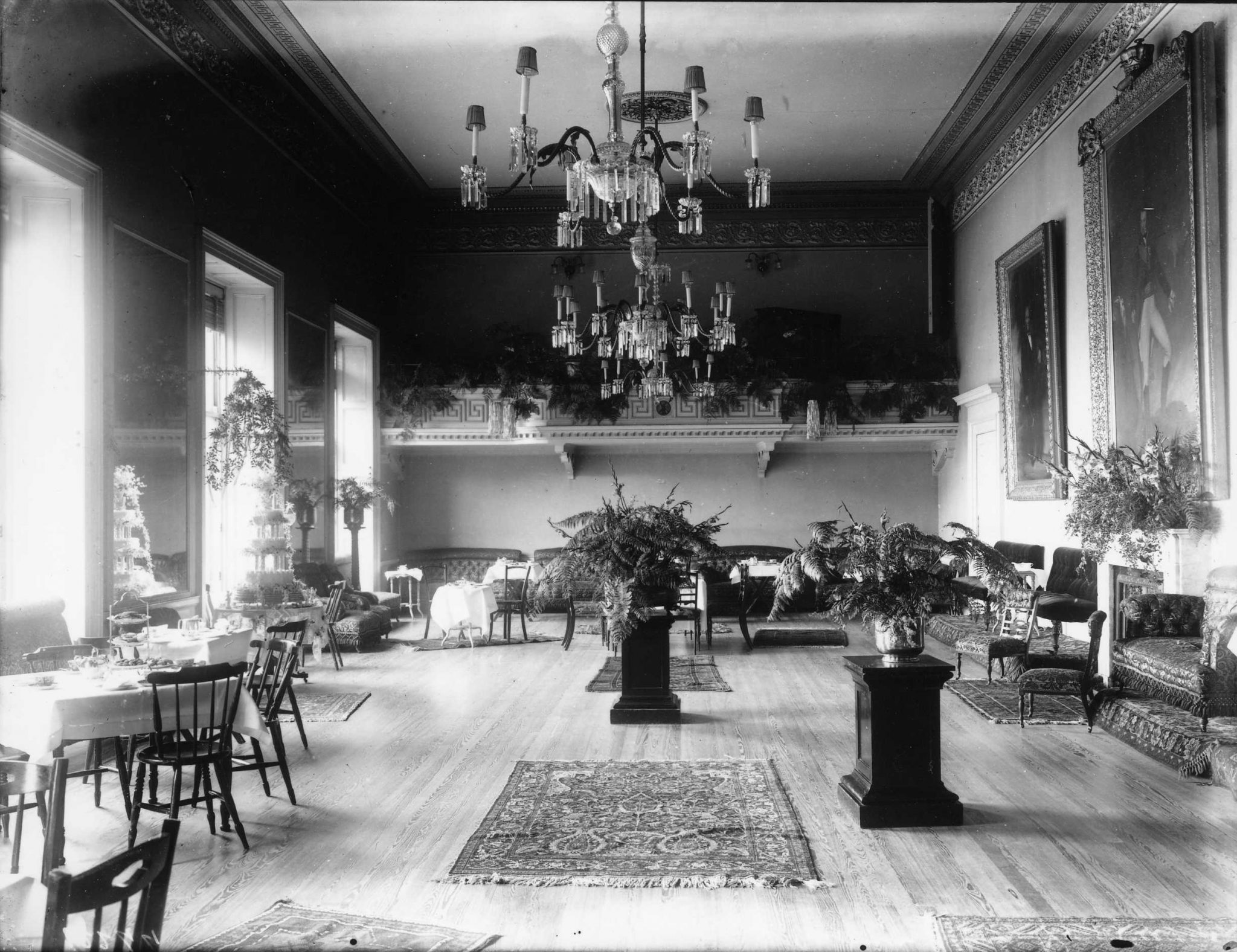While the 19th Century brought a flood of formal banking houses, ‘tippling houses’ and ever-increasing shop premises within the centre, it was felt that respectable Elgin Society needed a special meeting point for celebrating grand occasions in veritable style.
The formidable Assembly Rooms building was situated at the top end of North Street, opposite the much renowned ‘Woolies corner’, a significant focal point many of us remember. ‘Woolies’ was the favourite shop of locals of all ages from 1928 until it finally closed the doors in 2008. Across the road, the original site of the Assembly Rooms was the site of the once austere looking Calder House, residence of the eccentric Dr Dougal. The house was deemed to be haunted! Investigations uncovered stories of people who just disappeared after entering the derelict building … and their bodies boiled up in a massive cauldron. Many a tale was related about a ghostly apparition called Nelly – or ‘Homeless’ as she was sometimes called – who was a bit of a legend in her day.
Built by the Trinity Lodge of Freemasons, the Assembly Rooms building was completed in 1822 and boasted a grand ballroom with a famous sprung dance floor – very state-of-the-art for the day. The tension could be adjusted depending on the people expected to be dancing the night away. There was nothing else to compare and became the envy of nobility across the north of Scotland.
It seems the great and the good enjoyed many a happy occasion there, many of which are recorded in the Council Minutes. Grand balls with local dignitaries and elaborate dinners celebrating royal visits and weddings … this was the venue of choice across the region. But even back then, rowdy behaviour was recorded when too much merriment spilled over onto the street. On one such occasion, a row broke out between some gentry enjoying their social gathering and a group of locals on the street … tar barrels were set alight outside causing a lot of damage that night. The building was repaired and survived well into the 20th Century. This rather grand looking building with its array of tall 1st floor windows, stood for almost 147 years before finally succumbing to a new wave town planning. I can’t help wondering where all the fine paintings, chandeliers and mirrors ended up when the building finally closed its doors … and was interested to discover quite recently that one of our vintage mirrors at Park House Business Centre came from that very grand building of yesteryear. Our thanks to local authors Jenny Main and Mary Byatt and our friends at Elgin Museum for letting us share this imagery


